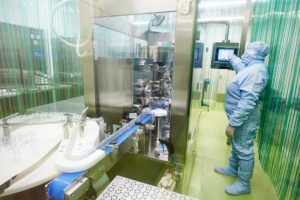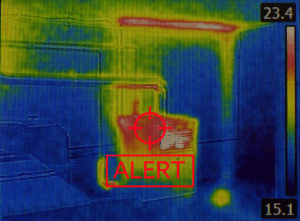Sawmill processes may look messy, tangled, and a bit haphazard to an untrained eye. But anyone who has ever worked on a sawmill knows that they are incredibly precise, well-planned and executed, as well as heavily regulated.
Plus, they need to be efficient, which makes for an even taller order. To check all these boxes, you first need to diagnose the efficiency and safety of your sawmill processes.
Did you know that you diagnose sawmill process issues with video monitoring? It’s easier than it looks and, since you probably already have a video monitoring system in place, why not use it to generate even more ROI?
Diagnose Sawmill Process Issues with Video Monitoring: 4 Approaches You Can Try Right Now
No two sawmills have identical processes. However, in our 50+ years of helping sawmills diagnose their process issues through video monitoring, we have noticed some common areas where challenges are easy to identify through our solutions.
1. On-Site Process Inspection Made Easier
Not all processes are easy to inspect by on-site operators. Getting close enough to bandsaws or debarker logs can be dangerous for the workers.
Through video monitoring, on the other hand, the inspectors can watch the live feed from the cab or elsewhere on the premises and identify potential issues and areas for improvement in real-time.
2. Off-Site Process Inspections Are Seamless and Asynchronous, Allowing for More Flexibility
You don’t necessarily need the manager to be on-site to view sawmill process issues. And even if your camera system isn’t networked for off-site viewing, someone on-site can simply download the necessary footage and send it off. Or some mills will port forward their video network into their business network so the cameras are accessible elsewhere (each mill has different rules on port forwarding—talk with your IT team about options).
When we say elsewhere, it means literally anywhere in the world. You can simply send the footage to whoever needs to see it, wherever they may be, and they can analyze it whenever they need to. With video monitoring, these unnecessary travels are avoided, thus saving you both time and money.
Besides helping you diagnose sawmill process issues, this video feed can also be useful in training new employees or serve as proof whenever you have compliance reviews with state or federal regulations.
3. Prevent Business Disruption by Quickly Diagnosing Sawmill Equipment Issues
On-site operators can watch the video feed in real time and easily spot any machine malfunctions before they turn into accidents or business disruptions. A skilled operator can spot a conveyor belt that’s about to snap easily, provided they have the vantage point they need.
By placing the cameras in the right positions, you can identify faulty equipment or equipment that needs maintenance sooner than scheduled. Diagnose these issues early on and you’ll avoid business disruptions and inefficient processes in your sawmill.
4. Spot Inefficiencies and Correct Them
You’ve surely heard the saying “you can’t see the forest for the trees.” That’s what usually happens in industrial environments too, sawmills included.
On-site employees, who perform the same tasks every day, are so accustomed to them that they can’t evaluate their own efficiency. They know it’s how things have always been done and they’re perfectly happy to keep doing them the same way.
However, the forest is usually much larger than the trees you see around you. Even a 1% uptick in productivity and efficiency can increase your profitability. Someone watching your video feed can see that a process takes too long and could be optimized with some adjustments.
A small tweak here, a tiny improvement there, a micro-improvement elsewhere can save hundreds of thousands of dollars per year.
How to Choose the Right Cameras to Diagnose Sawmill Process Issues
Industrial process monitoring is not as easy as grocery store surveillance. You can (and should!) use your system for more than security.
In order to do that, you can’t settle for off-the-shelf cameras. Sawmill cameras need to withstand the harsh environment and perform flawlessly even when dust, debris, splinters, and humidity are thrown at them.
The Opticom rugged cameras have survived direct hits in sawmills, some even by a log. Yes, the cameras are still functioning perfectly!
There’s also the issue of setting up your sawmill video monitoring system. If you want to diagnose sawmill process issues, you will need to be careful with where you place the cameras, that you have enough cameras, and that you have the right networking setup.
Don’t worry, you don’t have to do that on your own! We’re here to support you. Schedule a call with our consultants—leverage our 50+ years of experience in sawmill video monitoring. What have you got to lose?







